Facet Marking is introduced as a successor of the common facet type detection algorithm currently used in many report types (including Polish Reports).
Previously used algorithm only had a fixed set of pre-defined Facet Types which limited its use with certain fancy cuts and other diamonds with non-trivial shapes. For instance, limitations of the previous algorithm did not allow to properly mark all four groups of Pavilion Tier 2 Half Width in Cushion 0 model, marking Pavilion 2 Half 4 Width as Extra Additional. The new Facet Marking implementation allows the user to define as many Facet Group types as he requires, and all of the Facet Group properties are customizable. So, in the case of Cushion 0 example, the user now can create a new group named Pavilion 2 Half 4 Width and mark appropriate facets as belonging to this group.
Also, it is now possible to save a Sample file which contains both the Sample Model and a correct Facet Marking for the sample model. This marking from a Sample file can then be automatically translated to a Scan or Solution model to obtain correct marking and correct Custom Report.
This page describes general principles of how to work with the Facet Marking and Custom Report. As the Facet Marking is under constant improvement, some colors presented on the figures in this article may be out-of-date. You can find release 4.7.9 coloring description in the video:
Facet Marking for Standard Cuttings
For standard cuttings, for allocation results, the facet marking is applied immediately after solution creation. The system uses the pre-installed sample markings specified for each standard cutting.
Using the specific marking sample for each cutting makes the resulting Facet Making more accurate and reduces or eliminates the need for manual corrections.
Creating Samples with Facet Marking
Load Original Model
First, you have to load a model which will become the Sample model. It is possible now to load DiamCalc DMC files in Oxygen using File -> Open... menu:
Open Custom Report Dialog
After loading the model, switch to Diamonds tab. The Custom Report... button will become available in the right panel:
Sample, described in this document, you can download here: CUSHION0_sample_Custom_Report.dmc
After pressing the Custom Report... button in the right panel, you will see the Facet Marking dialog:
Edit Facet Marking
When a model is opened in the Facet Marking dialog for the first time, it will only have Basic Marking, i.e. only basic Cut Elements will be marked, such as Table, Crown, Girdle, Pavilion, Culet.
You can now do all the marking manually, but it is much better to first apply Auto Marking using the button in the bottom-right. This will apply an algorithm which tries to automatically detect known Facet Types. This algorithm uses the existing Facet Type detection method used in Polish Reports. It is accurate most of the time for basic shapes, but it can make wrong assumptions about certain facet types for Fancy Shapes and scanned diamonds. Anyway, using Auto Marking will save you a lot of manual work by correctly identifying all or most facets:
In case of Cushion 0 Symmetric Model (created in Cut Designer), Auto Marking correctly detects all but Pavilion 2 Half 4 Width facet types, which are incorrectly marked as Extra Additional.
To fix this, you have two options:
Option A: Select the incorrectly marked group and edit its properties
To select a facet group, you can simple Right Click with your mouse on a facet belonging to this group. Alternatively, you can find the group in the list and select it manually.
To edit group properties, simply click on the property you want to change in the in the Group List in the right panel. A select box will appear with the available options:
For Cushion 0, we should set this group the following properties: Pavilion 2 Half 4 Width
The same method it is possible to set other facets in correct group:
Now we have a correct Facet Marking:
Option B: Create a new group and edit is options
To create a new group press the New Group button under the Groups List.
A new group will be created and placedinthe end of the list. Select it to edit its properties.
Marking Specific Facets
To mark specific facets as belonging to a specific group, first select the group (in the Group List or by Right Click-ing on a facet which belongs to the desired group).
After selecting the group, Left Click on any facet that you want to assign to the selected group.
For quick "painting" of facets, you can hold the Ctrl key, press and hold the Left Mouse Button and then hover the mouse cursor over the facets you want to paint. Normally, this mode of operation is not required, but it can be helpful if you want to pain (mark) many facets at once, for instance when marking the Girdle.
Save Sample with Facet Marking
After you've finished editing the Marking, you can export a DMC sample file with embedded Facet Marking by pressing the Export Sample button in the bottom of the Facet Marking dialog:
Using Sample files with facet Marking
Loading a Sample file into a Project
To load DMC sample file into a project simply use the button from Samples tab in the Cutting&Method panel of the Scan tab.
Right now there's no indication telling whether a loaded Sample contains Facet Marking information, but the files that you have previously exported as Samples from the Facet Marking dialog, as described above, will have the Facet Marking data.
Applying Sample Facet Marking to Scans and Solutions
If you're working on a non-trivial cutting that requires Custom Report with specific Facet Marking or the stone proportions make it difficult for automatic facet detection algorithm to apply correct Facet Marking, you can apply a marking from a previously created Sample.
To do so, for the current project with already loaded model (for this document this is a sample - Cushion0_scan.mmd ) in the Custom Report dialog press From Sample...
You will be presented with a Sample selection and Facet Marking preview dialog. In the dialog, press Browse... to specify a folder containing your marking Sample.
This folder will be remembered the next time you open the dialog:
After the folder is selected, you will be presented with a list of DMC sample file names in the folder. Please note that the samples should contain Facet Marking data, otherwise they can not be aaplied.
You can select desired samples from the list and preview the sample model and its Facet Marking as well as automatic transfer of marking to the current model:
While the input focus is in the Sample list, you can use Arrow Up , Arrow Down keyboard buttons to quickly scroll through the list and preview various sample markings.
If you would like to apply current marking and proceed with marking editing and Custom Report generation, press Apply .
Otherwise, press Discard to get back to editing the the original marking you were working on.
If the model is significantly different from the Sample Model, the automatic Facet Marking translation may struggle to identify all of the facets that are introduced in the scanned model, especially if it's Blocking or Semi-Polished model and not a final Polish. In case there are any inconsistencies in the marking, the operator can fix them manually as described above.
Important Note
Sample Facet Marking is translated to current model only once — when the Custom Report dialog is first invoked for the current model. Once Custom Report dialog has been called for this particular model, the Facet Marking for this modelis preservedthe way the user left it. Whatever modifications are made in the Facet Marking dialog, will be preserved and stored in the OXG/OXGZ file when it is saved and subsequently loaded.
In coming versions we will introduce a method to (re-)apply Sample marking to current model at any given time.
Creating Custom Report
To create a Custom Report simply choose Custom Report... among the report options in the right panel. In the dialog, verify that the Facet Marking is correct, and fix it if necessary.
Finally, press Make Report button:
Once the document is generated, it will open in the Microsoft Word application.
Among other parameters and images, the document will have two additional tables: one with Statistics data (Min, Max, Avg, Dev) for each parameter of each Facet Group. and another one with individual parameter values of every facet in every Facet Group, i.e. specific angles, azimuths and heights of all the facets in every group:
Statistics table:
Individual values table:
In the tables above for a Cushion 0 Scan you can see values for the Pavilion 2 Half 4 Width group that we created earlier in the Sample Marking and which was automatically translated to the Scan model.
Demo video of Custom Report and Facet Marking
There is a demo video that illustrates the above points and works with Custom Report on Cushion sample:

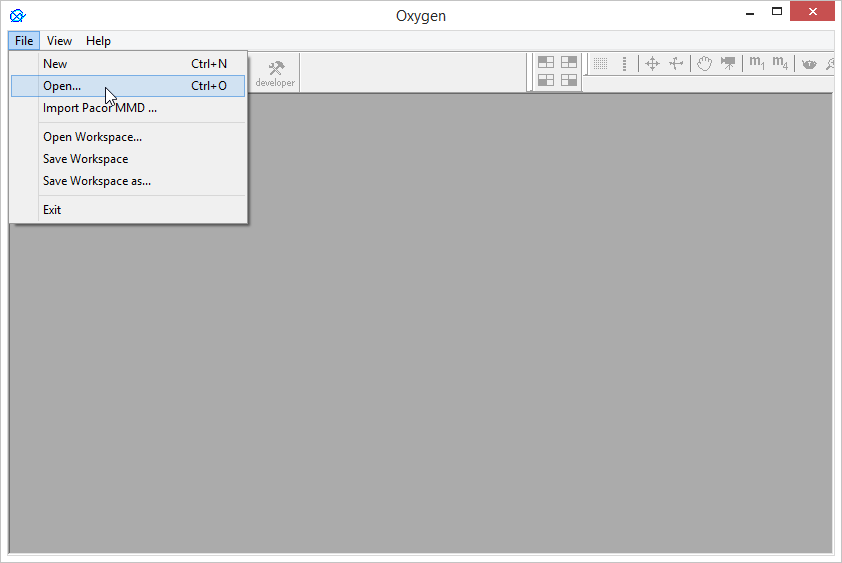
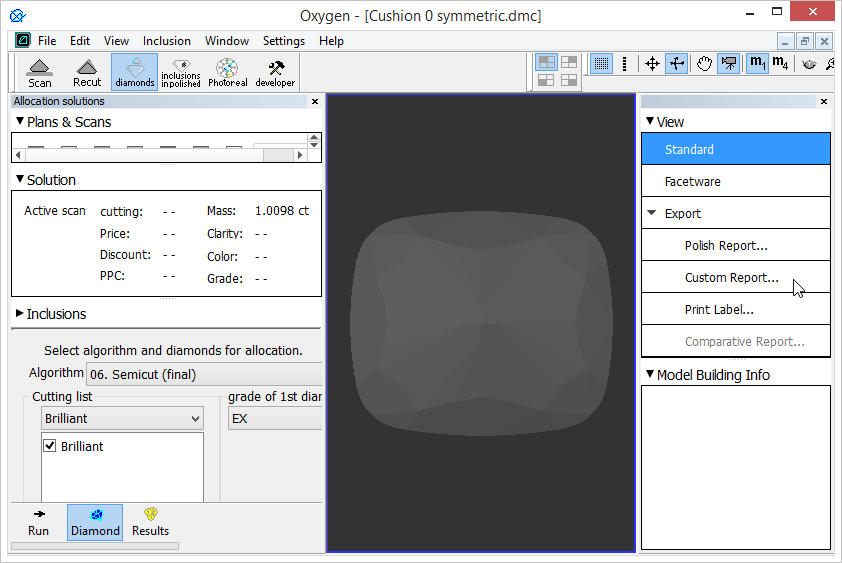
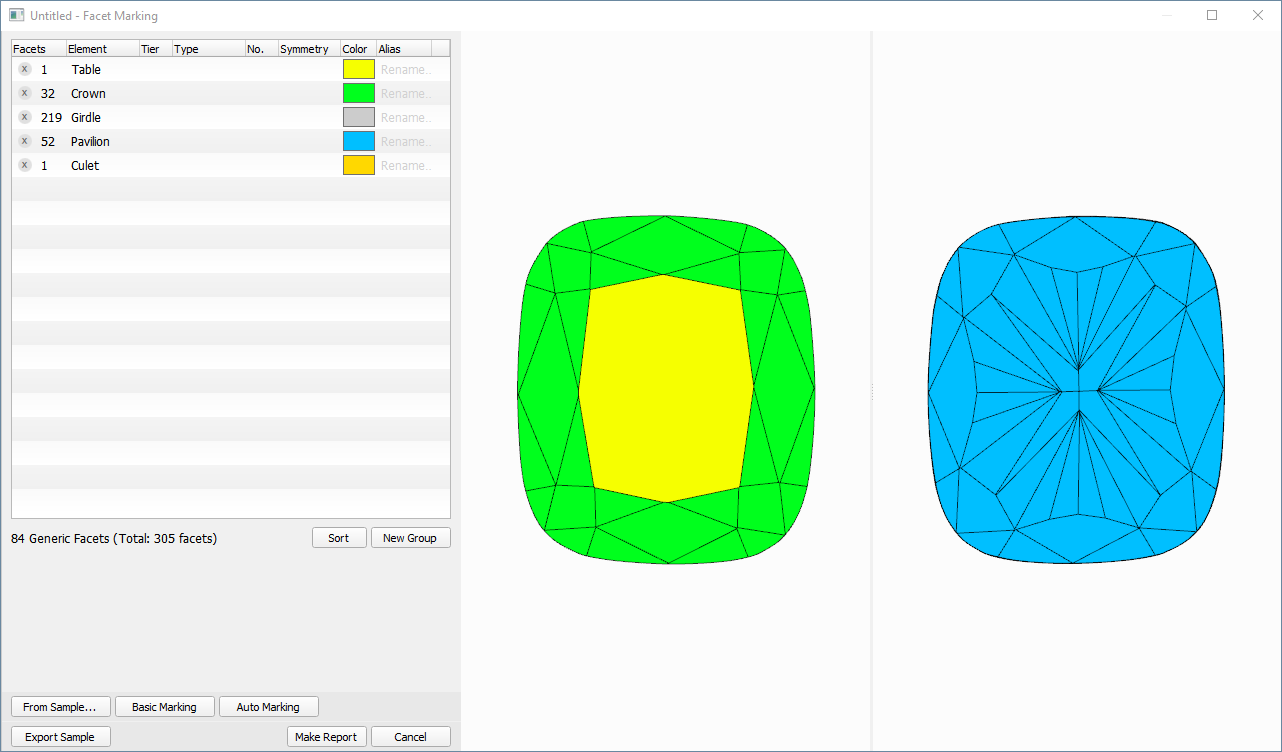
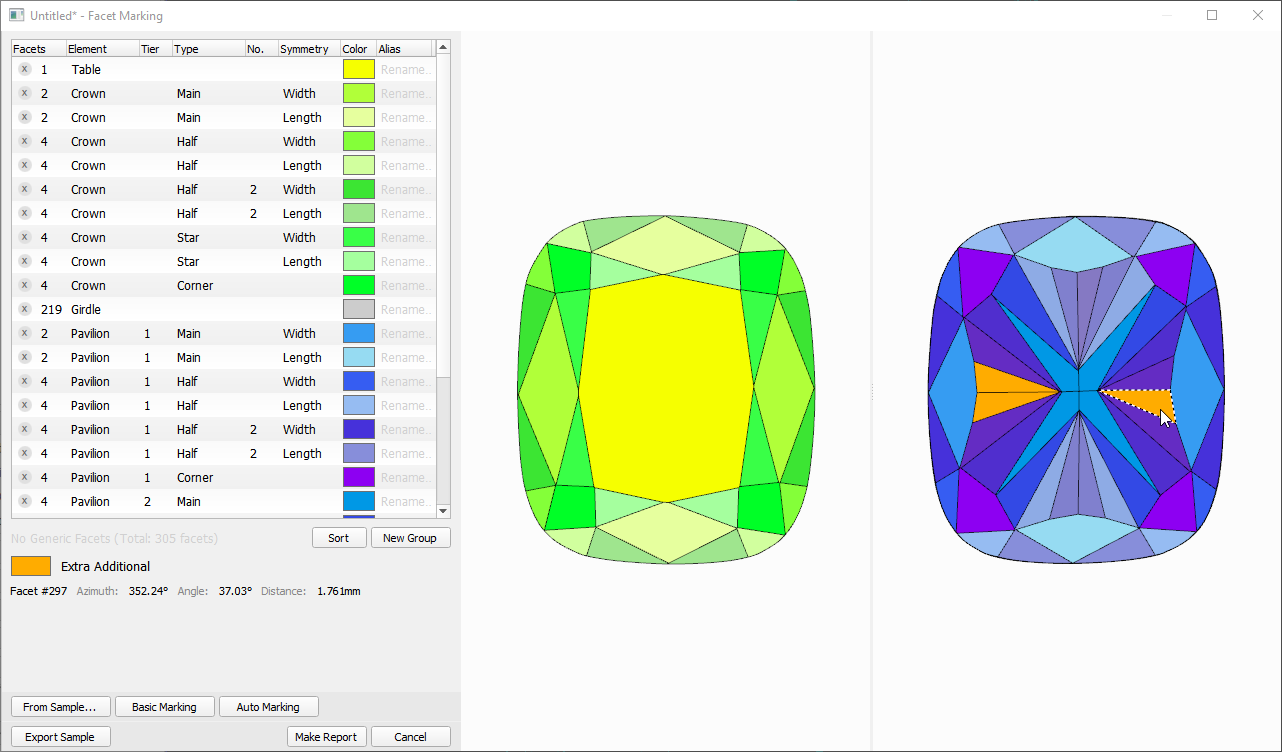
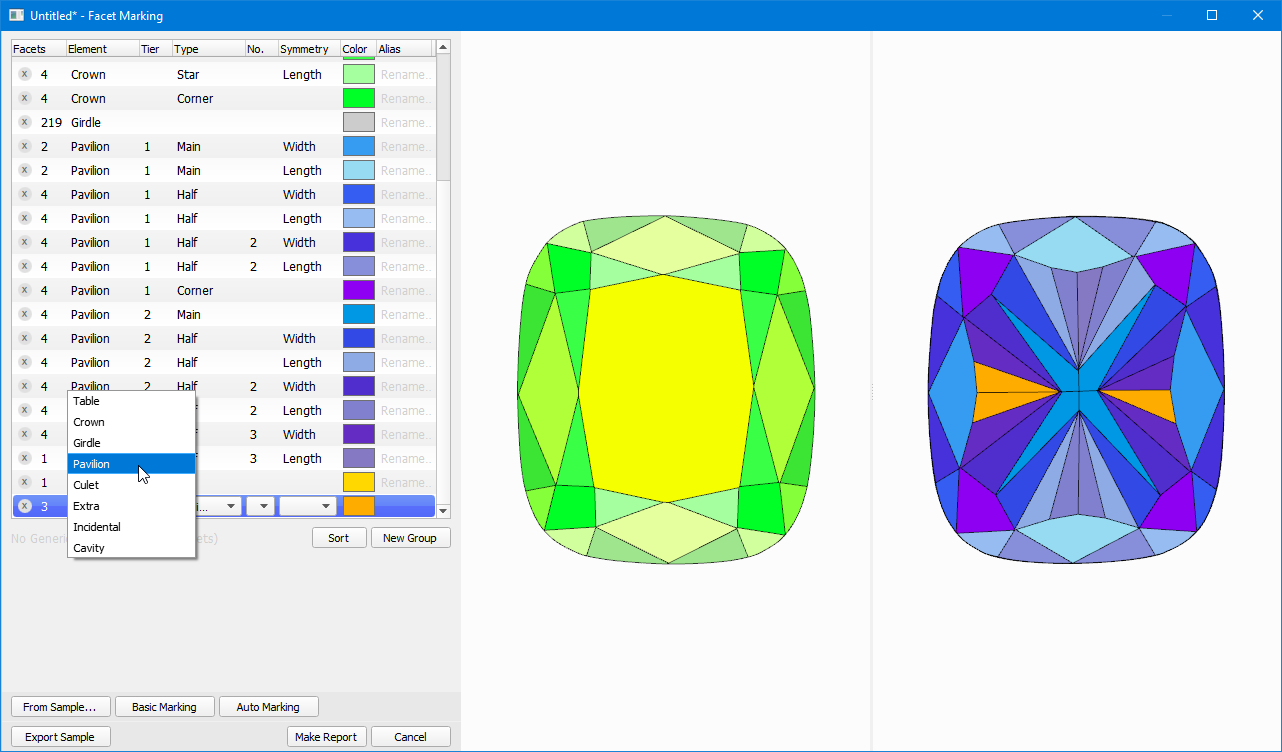
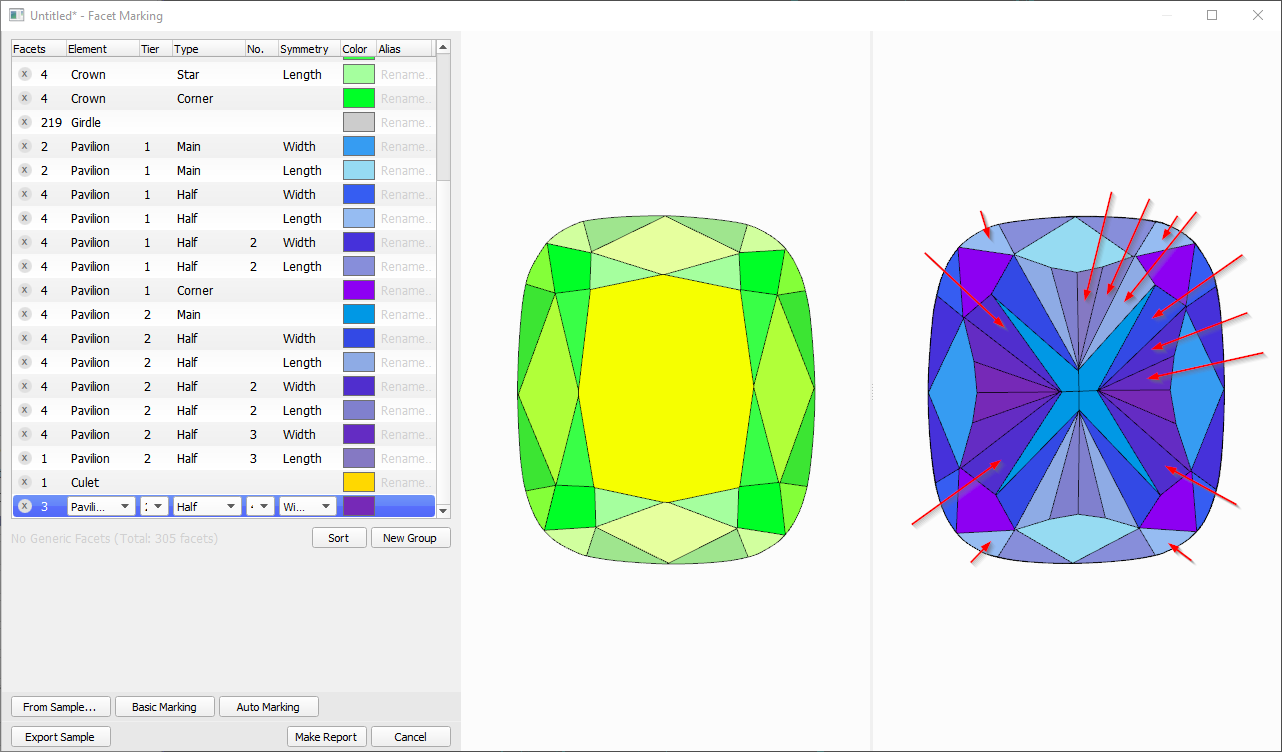
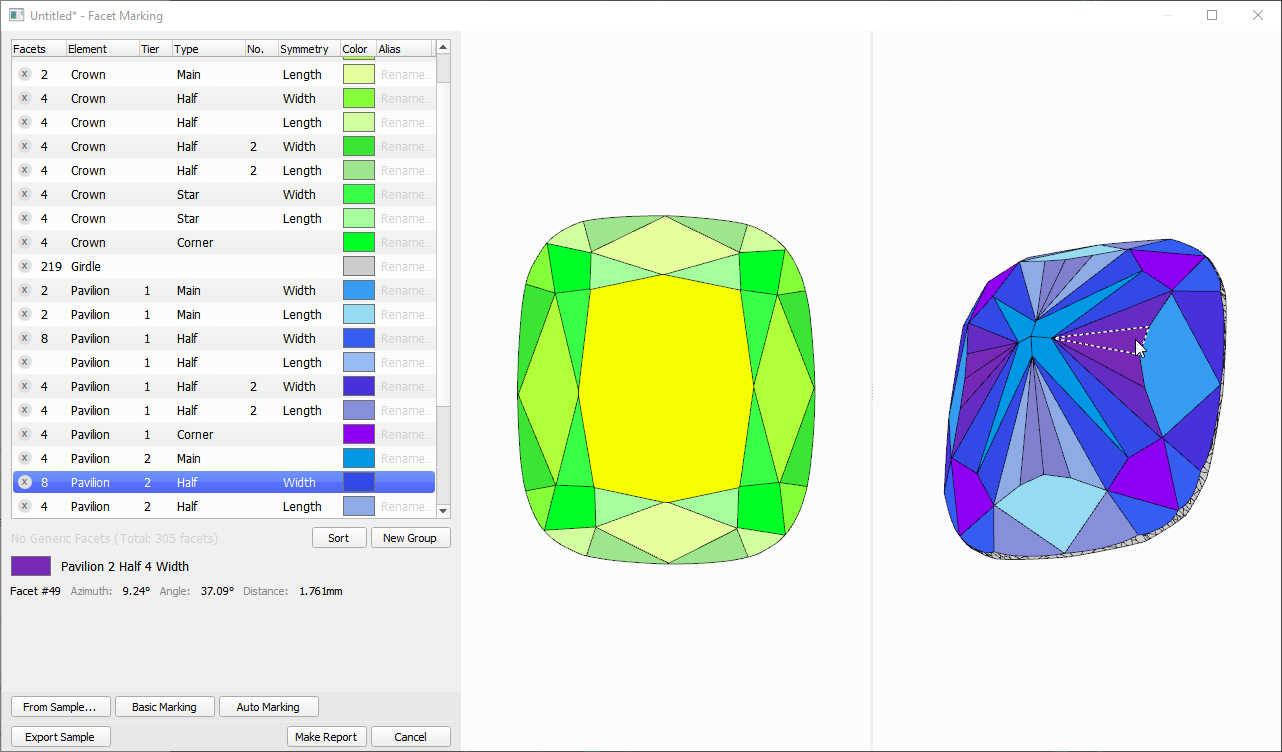


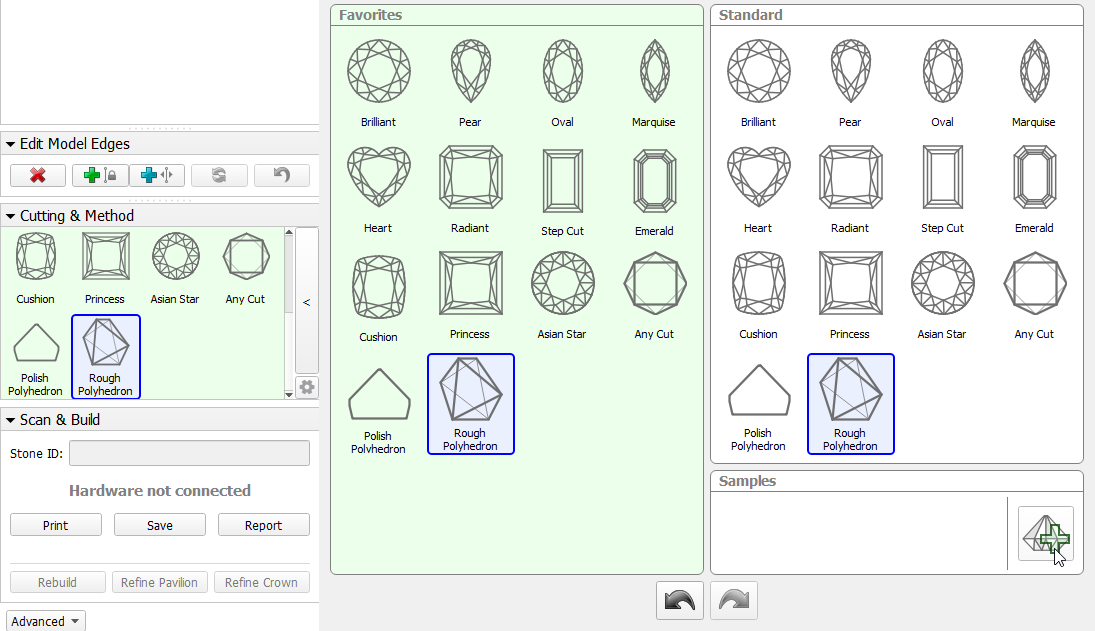
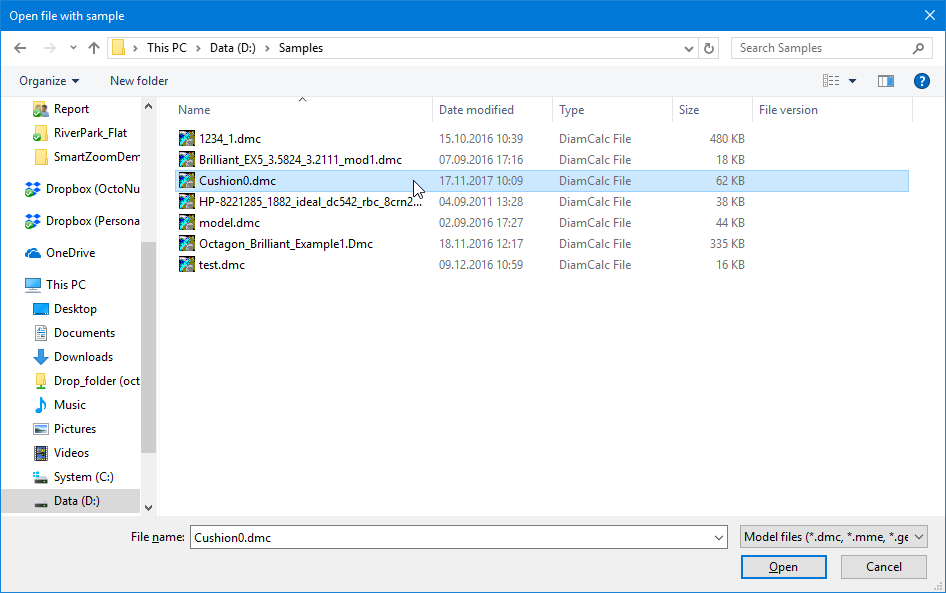
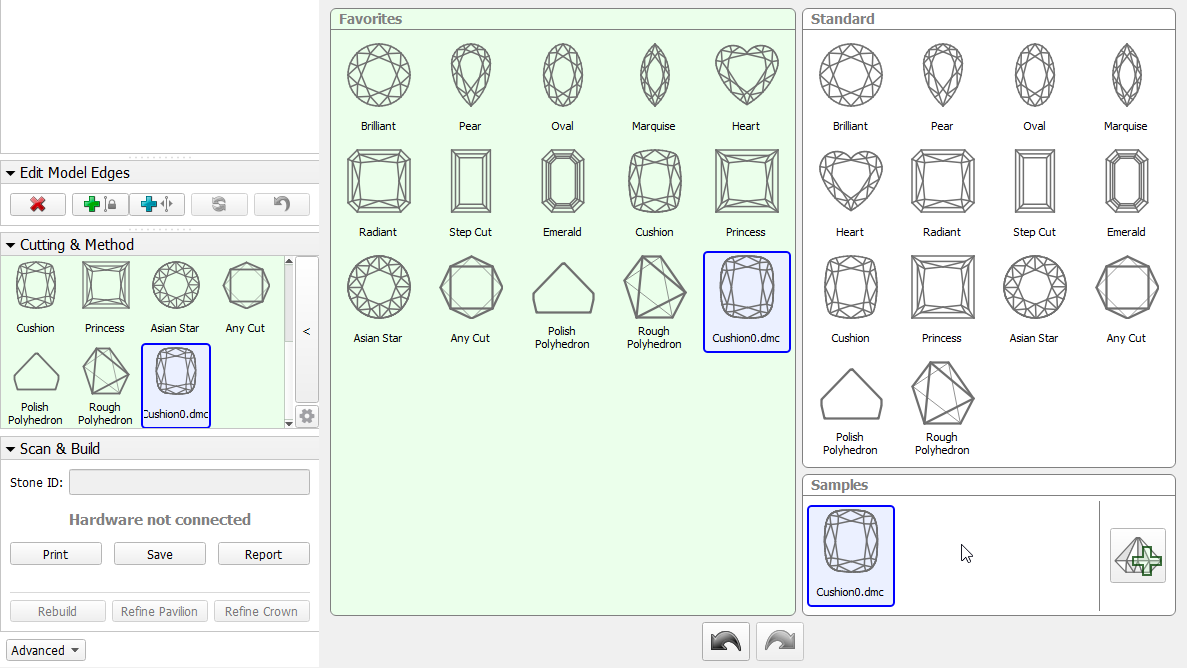

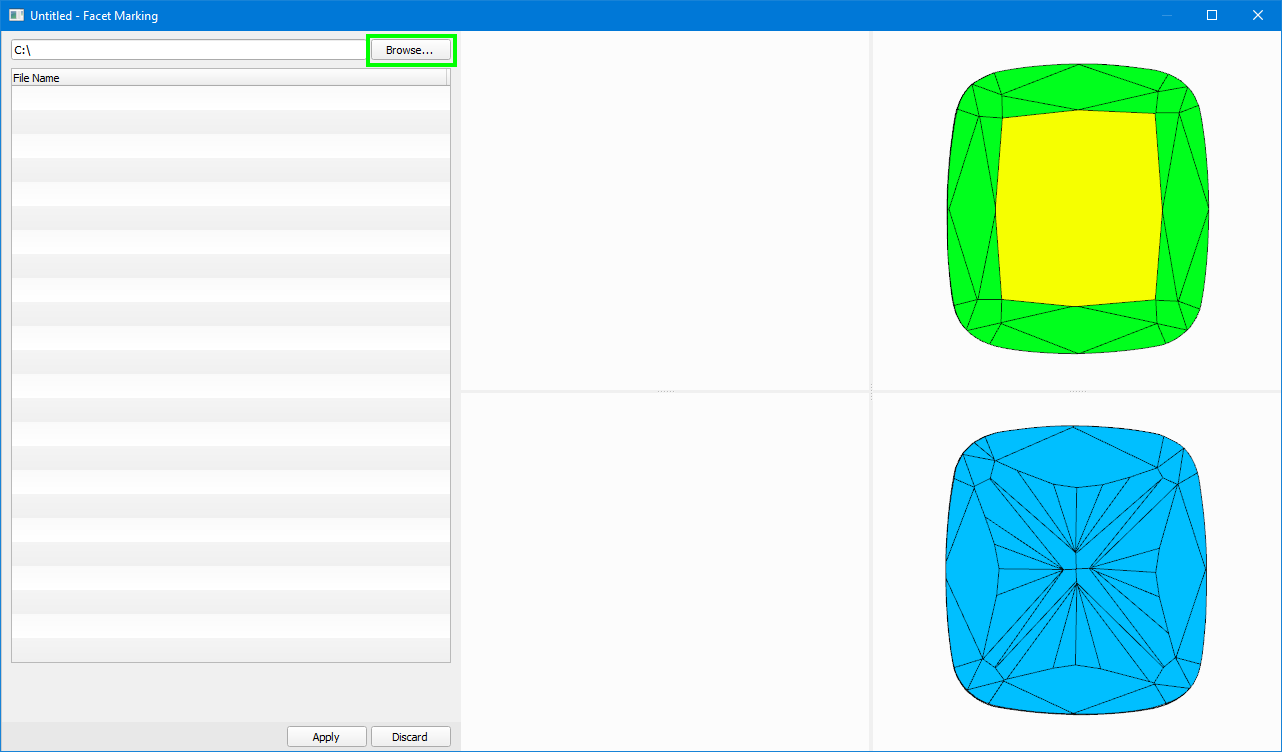
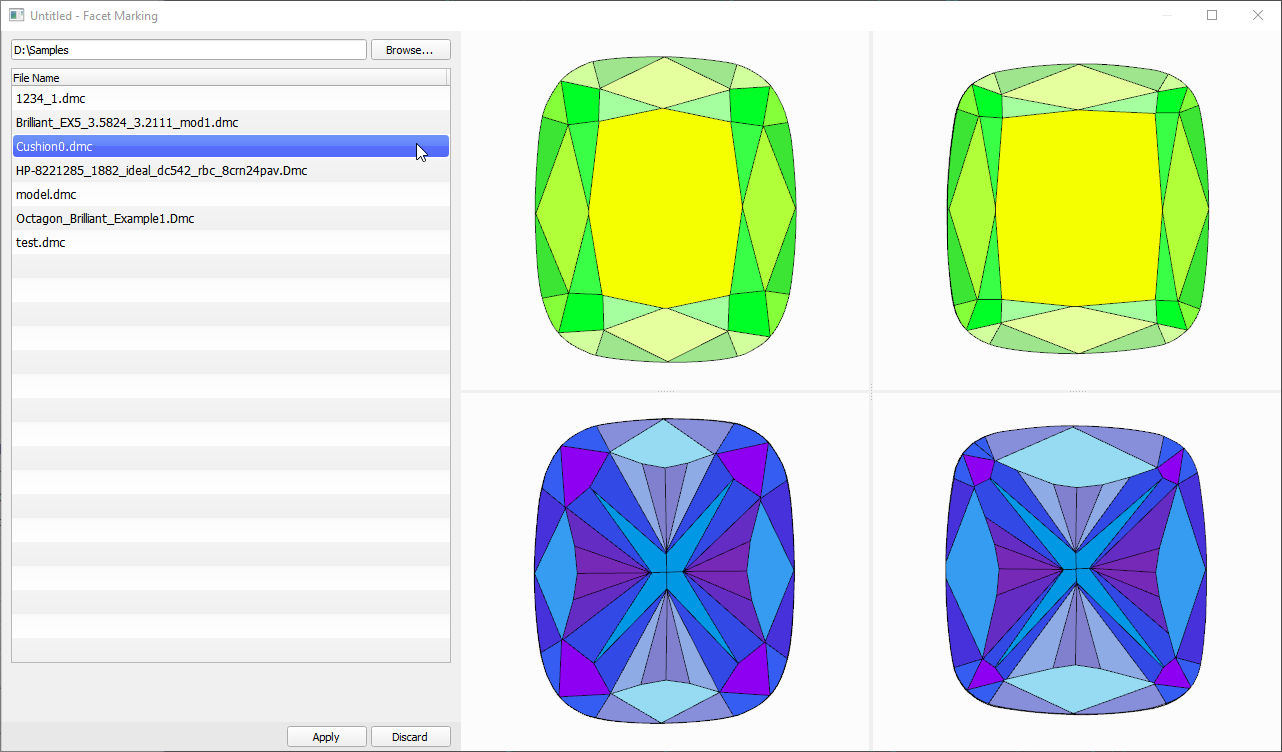

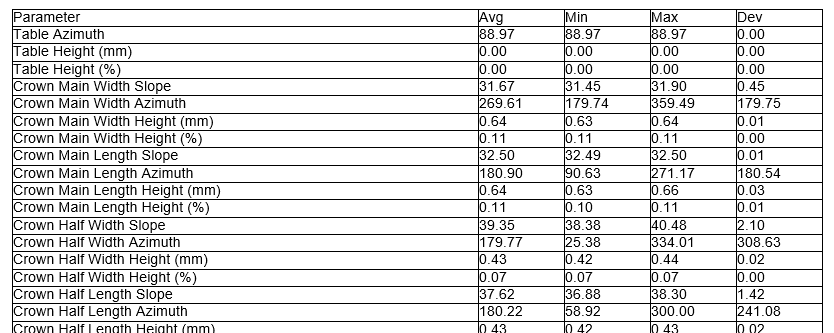
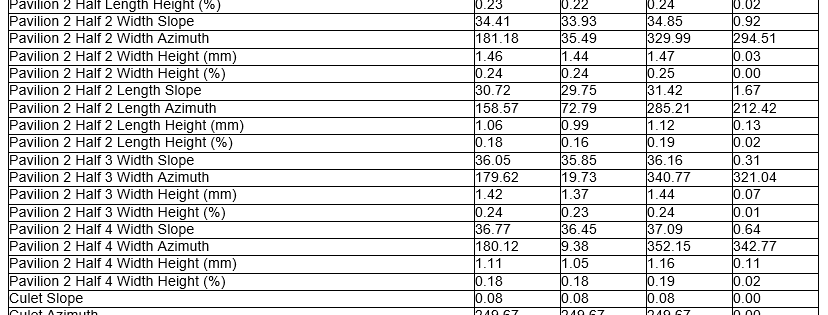
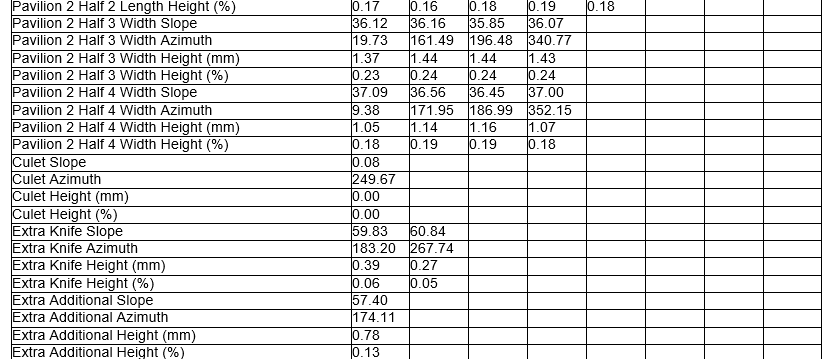
Add Comment